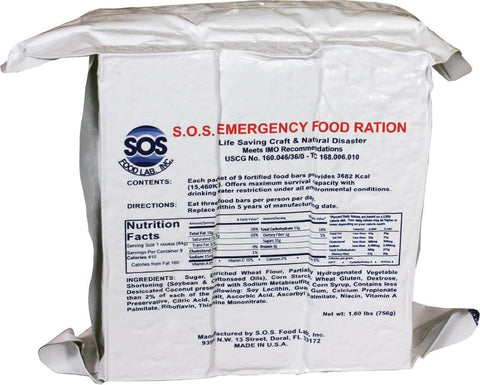
Earthquakes are currently considered to be the deadliest of natural disasters. Thus, if your child goes to school in an area that has a high seismic hazard level, it is only normal to be concerned about their preparedness for this type of calamity.
Luckily, you can lessen these worries by educating your kids on the possible risks and preparing an emergency bag with all the necessary supplies. Check out this earthquake kit list for school to know which essential things to include in your child’s disaster survival pack.
What Is an Earthquake Kit?

An earthquake survival kit is a compact, easy-to-carry bag filled with items essential in the event of a natural disaster. Typically, such a kit is used by people living in areas with high seismic hazard to minimize the potential risks and improve the level of safety during and after an event.
In case of an earthquake, this emergency kit plays a critical role and should not be underestimated. Thus, if you are living in a zone with high seismic activity, ensure that all members of your household have a survival pack ready.
Why Do Students Require Earthquake Preparedness Kits?
Children who attend school spend a significant amount of time away from home. Therefore, the chances of an earthquake happening during class can be high. That’s why it is so important to have a pack of useful supplies to rely on at all times. These can easily be placed in a locker for easy access.
Below, you will find a list of areas with the highest registered seismic hazard in the United States.
High-Risk Earthquake Zones in the US
According to the US Geological Survey (USGS), the following 16 states have the highest earthquake hazard:
- Alaska
- Arkansas
- California
- Hawaii
- Idaho
- Illinois
- Kentucky
- Missouri
- Montana
- Nevada
- Oregon
- South Carolina
- Tennessee
- Utah
- Washington
- Wyoming
If you reside in one of these areas, having an earthquake emergency bag is highly recommended.
However, remember that even a low-risk zone might be hit by a natural disaster. The contents of an earthquake kit can often be applied to other events, such as hurricanes and tornadoes.
School Earthquake Kit Essentials
When thinking about what to put in an earthquake kit, it is as easy to forget an essential item as it is to include unnecessary extras.
Not to worry - we’ve done the hard work for you and compiled a checklist that ensures your child will have a compact and ultra-functional survival kit at school.
1. First Aid and Hygiene

A first aid kit that you put inside the emergency bag must contain the following items:
- Adhesive bandages (all sizes)
- Butterfly closures (all sizes)
- Tape roll
- Gauze pad and gauze roll
- Scissors
- Examination gloves
- Antiseptic gel
- Aspirin or Acetaminophen
- Allergy medication
- Tweezers
- Burn cream
- Alcohol pads
- Antiseptic napkins
- Cotton swabs
- Eyewash
- Hot/cold pack
- Flashlight and glow sticks
- Breathing barrier with one-way valve
Whether you decide to buy a ready-made first aid kit or collect it yourself, make sure it contains an Emergency First Aid guide and a list of your child’s medical history, medications, doctors, insurance company, and contact persons.
2. Food and Water

It is best to equip your kid’s school emergency bag with enough food and drinking water supply for 72 hours.
Make sure to pack:
- Emergency food
- Water pouches or bottled water
- Energy bars
3. Shelter and Warmth
The following items will keep your child warm and provide shelter in the event of an earthquake:
If you live in a very cold climate, consider adding a set of thermal shirts and pants to the earthquake kit list.
4. Communication
When disaster strikes, power sources can break down and stay off for weeks.
If the power goes out, radio waves may be the only connection to the world. Thus, a battery-powered AM-FM radio is a crucial communication tool. Pick a newer model with a solar panel, crank lever, and flashlight.
For your child a smartphone, in order to keep it charged and be able to communicate, add a shock-resistant power bank to the emergency supplies kit.
Remember to place their Emergency Contact Card in their pack and practice how to get home or to your "safe place" on foot. You can see more on this in the Guidebook located in the Grab + Go Box.
5. Tools and Protection

The following tools can prove to be extremely useful during and after an earthquake at school:
- Pencil and notepad
- 5-in-1 Whistle
- Nylon rope
- Gloves
- Disaster Deck with vital action steps
Make sure your child knows how to use each of these items.
6. Comforting Objects
An earthquake is a stressful situation. A family photo or a small toy can have a calming effect and provide emotional comfort, so consider including it in the bag.
Earthquake Emergency Instructions for Students

With the items mentioned in this earthquake kit list for school, you can rest assured that your child has all the necessary equipment in case an earthquake occurs when they are away from home.
However, natural disaster preparedness consists of multiple factors. It is vital to have an action plan, conduct earthquake drills, practice safe routes home from school, store the emergency bag properly, and revise the safety information regularly.
All these steps will ensure that your child knows how to survive an earthquake at school and use the gear properly.






